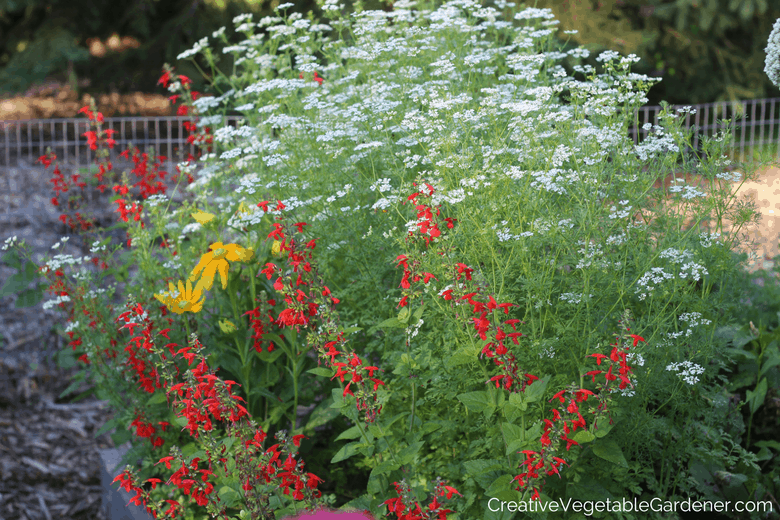
Bolting vegetables in the late spring and early summer garden can be quite frustrating, and even puzzling. You might think to yourself, “Why is this happening?!”
In most gardening climates there’s a transition period when the cool temperatures of spring start to give way to the warmer days of summer.
For those of us who love summer (me!), it’s a time to rejoice – we revel in the heat and sun!
But, for those of us who prefer cooler temperatures, we might start to get a little cranky with the arrival of hotter days.
Did you know the vegetables in our gardens have weather preferences just like us gardeners?
Some vegetables grow best in the mild temperatures of the early season – lettuces, cilantro, radishes, and spinach, for example.
Once the weather heats up and the days get longer, these cool season vegetables are more likely to start flowering – or bolting.
Vegetables bolting is a natural part of the gardening season, so don’t worry that you’re somehow doing something wrong.
In this article I’ll walk you through what causes vegetables to bolt, which ones are the most likely to do so, and some tips on trying to avoid it as long as possible.
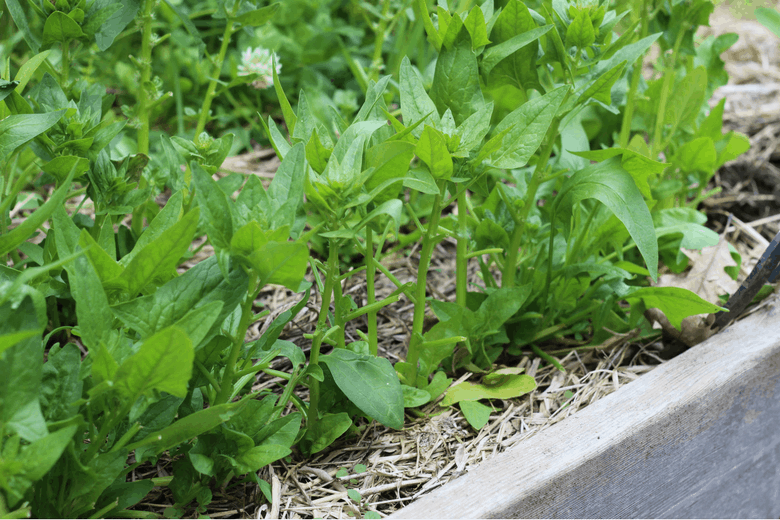
This post contains affiliate links.
What Happens When a Plant Bolts?
As we discussed above, you’ve probably noticed that right around the beginning of summer your spring vegetables like spinach, lettuce and cilantro start to act a bit weird. They start to elongate at the center of the plant, pushing up a stalk that will eventually produce flowers.
This is called bolting, or going to seed. It’s a natural occurrence that signals a change in the plant’s life cycle.
Bolting is commonly caused by increasing day length and warming soil and air temperatures which encourage the plant to move into its reproductive phase. It abandons leaf production and starts producing flowers and seeds so it can spread itself around and live for another generation.
The problem with bolting is the vegetables quickly become inedible. You might notice that the flavor of the vegetable changes, becoming more bitter or losing its taste altogether.

Which vegetables are more likely to bolt?
Bolting occurs with early spring vegetables like:
Arugula
Bok Choy
Broccoli
Cilantro
Lettuce
Radishes
Salad mix
Turnips
This is why it’s important to plant these vegetables as early as possible (within reason) in spring. That will give them time to grow in their preferred temperatures and daylight and offer you several harvests before the summer gardening season.

Spinach starting to flower.
What should you do about bolting vegetables?
In the late spring it’s best to stay on top of harvesting these sensitive vegetables so you don’t get surprised by a row of bolted cilantro that you didn’t even get around to harvesting yet. If you do see early signs of bolting, harvest as much as possible before it really gets going.
With vegetables like cilantro or salad mix, you can use scissors to cut the entire row down to a few inches high. This might buy you a little extra time, but bolting is inevitable eventually.
How do you prevent vegetables from bolting?
Bolting vegetables can be frustrating. It seems like as soon as they really get going and you’re enjoying the harvests, they send up a flower.
Because bolting is a result of increasing day length and temperature, there’s not much you can do to prevent bolting altogether in your garden. But, there are a few techniques you can employ throughout the season!

Arugula flowers – they’re sweet and spicy!
Tips for Avoiding Bolting Vegetables

Give them some shade.
One year I visited some friends in late August and they served us fresh salad from their garden for dinner. I immediately had to know how they still had salad in such a hot time of year in Wisconsin!
I discovered they had a very shady bed in their garden that allowed them to keep growing salad greens all through the summer.
Keeping the vegetables and soil cooler with shade during the height of summer will help prevent them from bolting. You can do this by planting them in any garden beds the are in partial shade or draping shade cloth over plantings.
Plant bolt resistant varieties.
For those vegetables that often bolt in your garden, shop for seeds that say “heat tolerant” or “bolt resistant” and give those a try. Keep records so you know which ones perform the best in your climate.
One spring I grew Yankee Hardy Lettuce Blend from High Mowing Seeds and was super impressed by how bolt resistant it was. It was my last salad mix planting to go to seed in early summer.
Because I wrote down the variety and where I planted it on my garden map I was able to evaluate it against the other varieties. I’ve been growing it ever since!

A lady bug on flowering cilantro.
Let them flower.
Have you ever seen a spinach plant flower? Did you know that arugula flowers taste spicy? It’s pretty interesting to let vegetables flower and learn what their flowers look like.
They’ll also attract and feed your local pollinators. If I have the room I’ll often let vegetable plants flower for awhile before ripping them out and planting a new crop.
Replant that space with another vegetable.
Right around the time when things starting bolting in my garden is when I start to feel like I’ve run out of room. I’m usually all too happy to yank out that spinach that’s going to seed and replace it with my second planting of green beans.
Look on the bright side of bolting – you can clear out some room to plant something else!
Find tips for summer planting in June and July.

Plant again for a fall harvest.
The vegetables that grow well in spring also love the cool temperatures of fall weather. Most of the early spring vegetables you grow in your garden can be planted again in late summer.
Instead of increasingly warmer and longer days, it’s getting colder and darker, which makes these vegetables very happy. I find it much easier to grow cilantro, spinach, and arugula in the fall.
These vegetable crops never bolt late in the season and they’re all frost hardy so I’m able to harvest them into the late fall and early winter. This results in many, many more weeks of harvest in fall compared to spring plantings.
Discover why fall spinach is the most amazing vegetable to grow.
Embrace eating with the seasons.
One of the joys of gardening is eating with the seasons. Our modern food system has fooled us into thinking its best to eat the same vegetables every week all year round
Instead, be creative in the kitchen and focus on eating what’s coming out of your garden or the farmers’ market that week.
I eat a spinach salad from my garden for many months of the year and it’s one of my favorite vegetables to grow. But, when summer comes and all of my spinach goes to seed, I accept it.
I take a break from spinach and expand my definition of salad and create fresh dishes from the short-lived summer crops like summer squashes, tomatoes, cucumbers.
See, vegetables bolting in your garden isn’t so bad! It’s a natural process that has nothing to do with your skills as a gardener. It’s something that happens to all of us! Learning to understand and work with Mother Nature is the path to less frustration and more success in your garden.
More summer garden reading:
SHARE IT ON PINTEREST

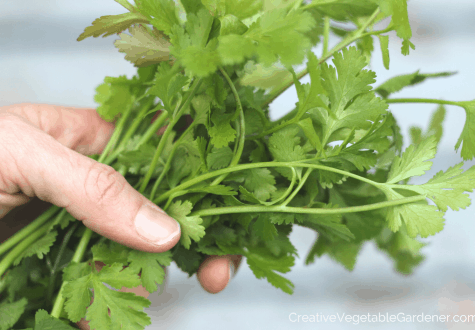

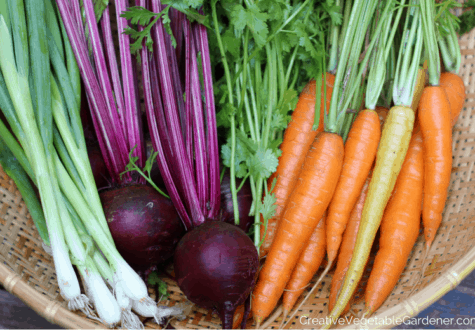

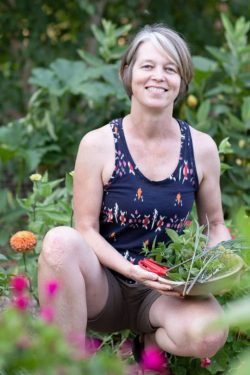

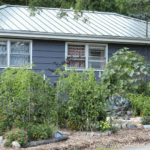
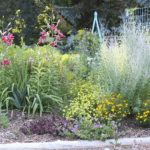
Comments
[…] What Happens When a Plant Bolts? – Creative Vegetable Gardener Megan Cain (SG557) […]
Thanks for your article, on a similar note, my mother taught me that the best fertilizer for beans, tomatoes, peppers and peas is chicken and bird droppings because of the high nitrogen content in the manure encouraged flowering and led to higher crop yeild, and she said I must avoid this on root vegetables, spinach and cabbage as it encouraged early flowering…. I also understood from her that nitrogen needs to be introduced artificially to soil as soil naturally lacks this particular nutrient, however that certain plants leech nitrogen into the soil, as happens during thunder storms as well, surely if this is the case, would nitrogen not then build up in the soil during cooler months when leafy greens and root crops do best, and when itrogen levels reach certain levels these greens then bolt, to be replaced with a vegatable that leeches nitrogen from the soil such as pulses and maize… just thinking….
Nitrogen is difficult to measure in the soil because it’s always fluctuating. Vegetables are heavy nitrogen feeders, but if you give them too much you’ll get a lot of green growth but not much flower or fruit set. It’s definitely a fine line!
I like to leave a few bolted plants to get their seed next Bolted Arugula has pretty, sweet smelling flowers.